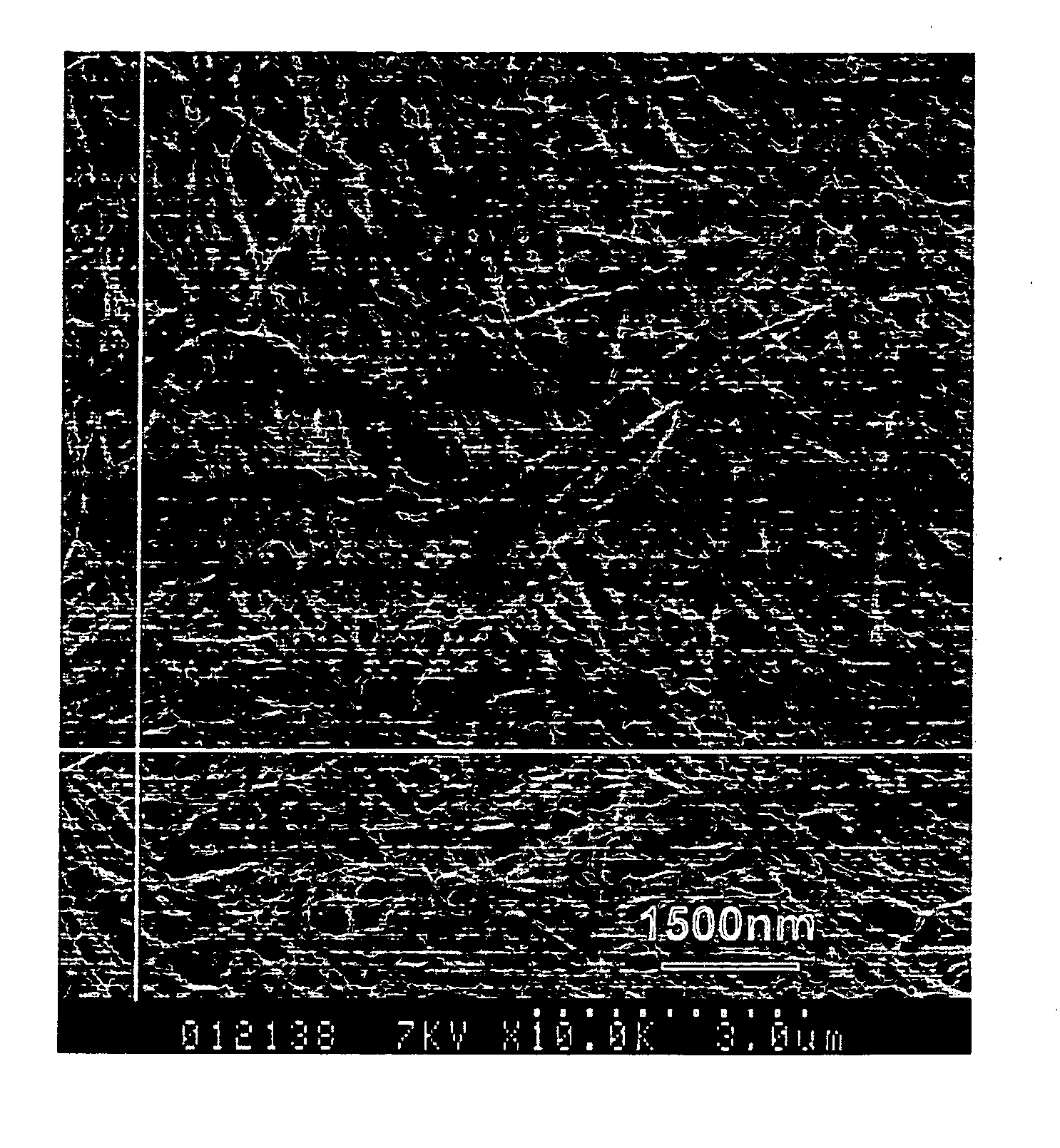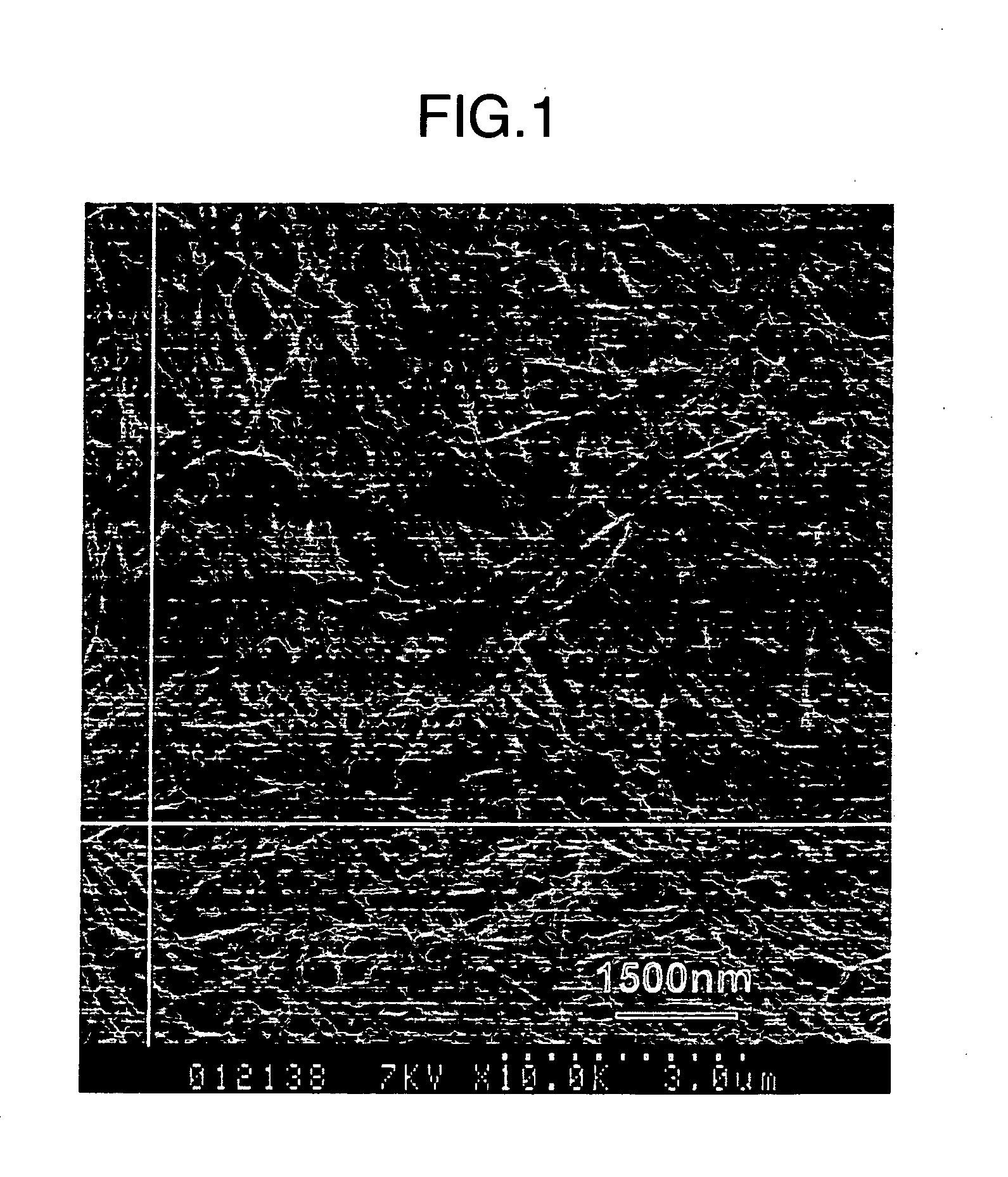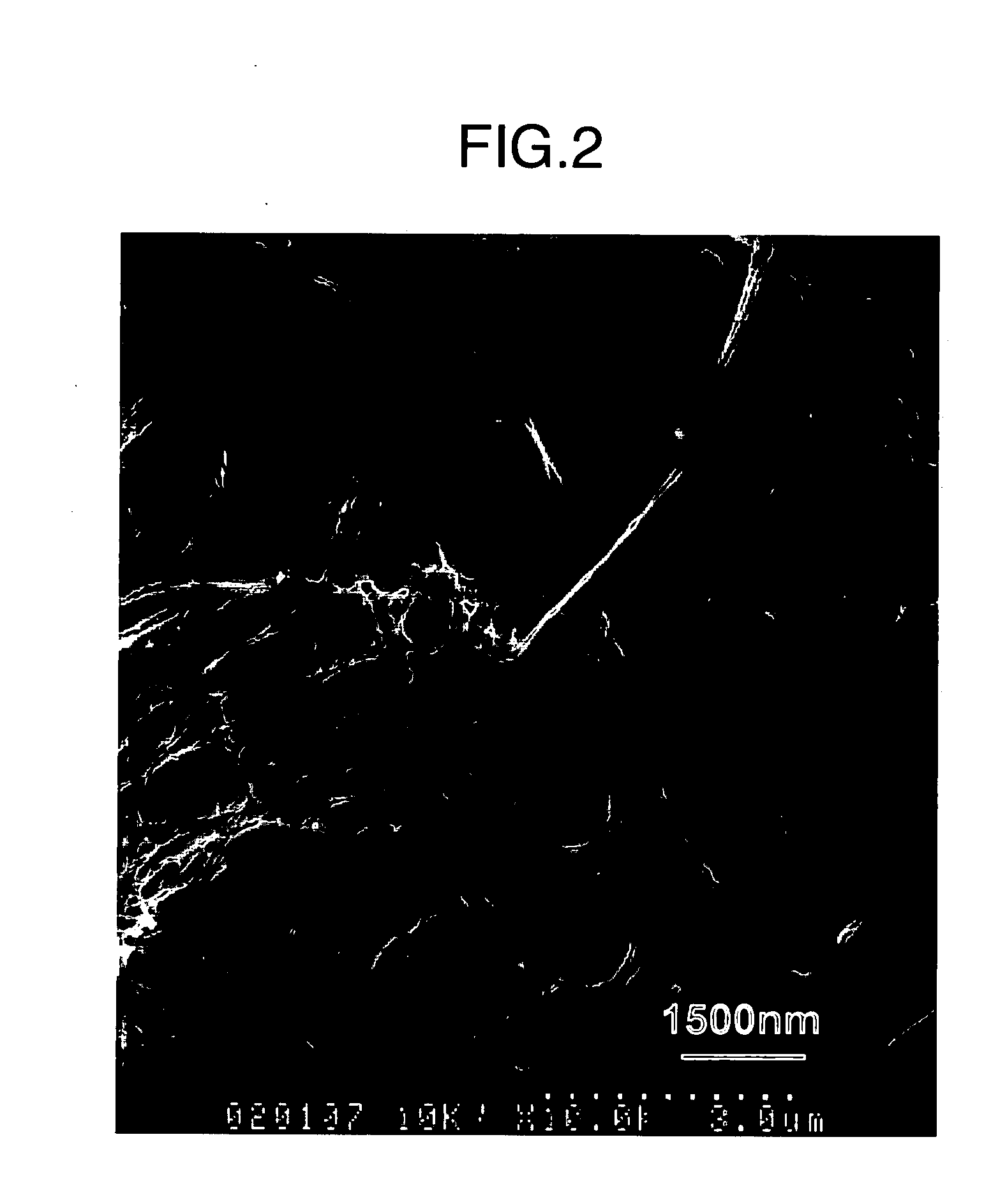Cellulose Nonwoven Fabric
a non-woven fabric and cellulose technology, applied in the field of cellulose fiber and non-woven fabric, can solve the problems of interfering with the characteristics of high heat resistance of cellulose origin, and achieve the effects of high heat resistance, excellent raw material, and high mechanical strength
- Summary
- Abstract
- Description
- Claims
- Application Information
AI Technical Summary
Benefits of technology
Problems solved by technology
Method used
Image
Examples
example 1
[0160] After a polysaccharide production medium culture (Polysaccharide-production medium, Akihiko Shimada, Viva Origino, 23, 1, 52-53, 1995) supplemented with 2.0% of D-glucose was subjected to sterilization treatment with high pressure steam and 1000 L thereof was placed in a fermenter having a volume of 3000 L, inoculated with CJF-002 strain so as to attain 104 CFU / ml and agitation cultured by bubbling at 30° C. under ventilation for two days. Cellulosic materials (BC, degree of polymerization: 3700) in independent form which constitutes macrofibrils radially from a central domain or linked forms were obtained by this agitation culturing.
[0161] The obtained cellulosic material was then separated by filtration with a screen mesh, washed with water, compressed and immersed in 1% by weight of aqueous sodium hydroxide solution, heat-treated a at 80° C. for 60 minutes, cooled and then neutralized with sulfuric acid and compressed again. Furthermore, washing with water and compression...
example 2
[0172] Raw cotton for cotton linters was subjected to steaming treatment in 6% NaOH aqueous solution (170° C., 90 minutes) and chlorine bleaching treatment (30° C.), and then washed with water and dehydrated and the thus obtained purified cotton linter M3 (solid content: 50% by weight, degree of polymerization: 900) was immersed in water so as to be 5% by weight and heat-treated at 130° C. for four hours in an autoclave. After treatment, slightly yellowed liquid was removed, and washing with water and dehydration was repeated twice to obtain purified cotton linter M4 (50 solid content % by weight, degree of polymerization: 900).
[0173] The purified cotton linter M4 was disperse in water (ion-exchange water) so as to be 1.0% by weight, treated with a beater (manufactured by Kumagaya Rikaki Kogyo Co., Ltd., device for 23 L) for two hours and then dispersion treatment under operation pressure of 100 MPa was performed 20 times using a high pressure homogenizer (manufactured by Niro Soav...
example 3
[0181] Paper making using 850 g of a dispersion for paper making was performed under the same conditions as in sheet forming by the paper making method of BC-1 in Example 1 except that the filter cloth made by PET was not used. The waste fluid (filtrate) at this time of a paper making process was tinged with whiteness slightly, which suggested that fine cellulose fibers were contained in the filtrate. The organic solvent substitution and drying were also performed in the same steps as in those for BC-1 and white cellulose nonwoven fabric BC-4 was obtained.
[0182] BC-4 was a nonwoven fabric having a sheet thickness of 26 μm and a porosity of 74%. The results of estimation on the variation in the quality of BC-4 were shown in Table 1, which suggested that it was a nonwoven fabric having a relatively large pore size because the porosity was a little lower and air permeability showed a lower value as compared with BC-1. At the same time, unevenness parameter H′ was as large as 0.42 whic...
PUM
| Property | Measurement | Unit |
|---|---|---|
| diameter | aaaaa | aaaaa |
| porosity | aaaaa | aaaaa |
| porosity | aaaaa | aaaaa |
Abstract
Description
Claims
Application Information
 Login to View More
Login to View More - R&D
- Intellectual Property
- Life Sciences
- Materials
- Tech Scout
- Unparalleled Data Quality
- Higher Quality Content
- 60% Fewer Hallucinations
Browse by: Latest US Patents, China's latest patents, Technical Efficacy Thesaurus, Application Domain, Technology Topic, Popular Technical Reports.
© 2025 PatSnap. All rights reserved.Legal|Privacy policy|Modern Slavery Act Transparency Statement|Sitemap|About US| Contact US: help@patsnap.com



